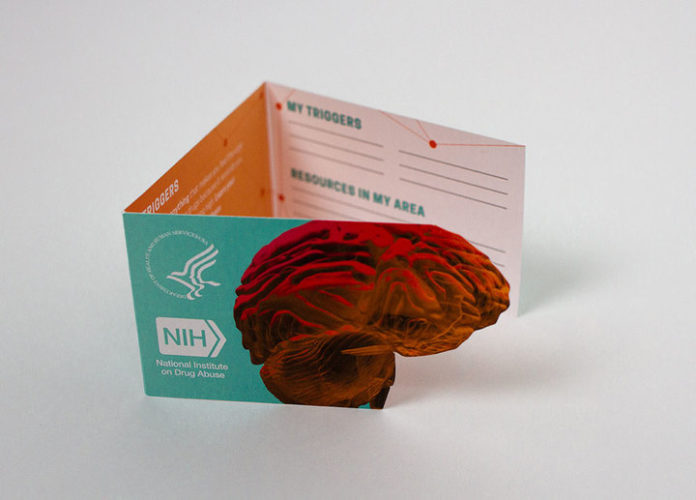The National Institute on Drug Abuse (NIDA) revealed a new relapse prevention tool intended for at-risk offenders departing correctional facilities: The Drugs and the Brain Wallet Card (DBWC).
“NIDA developed the DBWC as a resource for people during this vulnerable period, but it is broadly applicable to many other settings,” said Tisha Wiley, Ph.D., health scientist administrator in the Services Research Branch at NIDA. “Individuals who participate in residential treatment are similarly likely to relapse upon returning home.”
NIDA’s staff oversaw a search of existing resources and found that none demonstrated an easy-to-read format for this specific information. So, the DBWC was created to address this demand, she said.
The 2-inch by 3.5-inch trifold card — which is discreet and can be kept in a purse, pocket, wallet or cell phone case — will serve as a guide for those looking to transition back into society. Counselors can also customize this card to better assist patients in identifying triggers that can harm their sobriety.
“One of the panels of the DBWC contains a space for a person or counselor to fill in individual triggers and local resources,” Wiley said. “The intention is for the counselor to help the person identify his or her individual triggers, such as a specific location where he used drugs or a situation at home that made her want to use drugs.”
Local resources could be identified as a counselor, a trusted friend, or a state-level helpline. Essentially, anything or anyone an individual can reach out to for help.
“The helpline resources include SAMHSA’s treatment locator and Suicide Prevention Lifeline,” Wiley explained. “By having the card on-hand, if an at-risk offender needs immediate help, they know what resources are available to them. Additional resources include links to NIDA’s website, including information about naloxone.”

The card also offers a short explanation of the risk of overdose following relapse. “Community re-entry is a time of particularly high vulnerability for relapse and potential overdose,” Wiley said. “Drug-related deaths are most likely during the first two weeks of release from prison.”
Wiley referenced a study that further explained the dangers of… (continue reading)
















